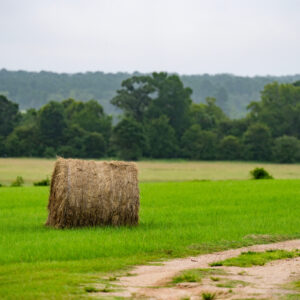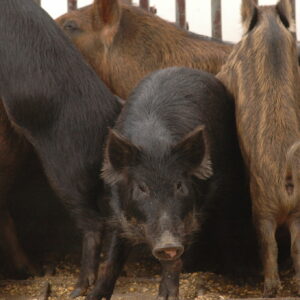(Field 1)
Wenwei Xu
Objective: The objectives are to select drought tolerant corn germplasm adapted to the Texas High Plains and to determine the economic and agronomic feasibility of growing drought tolerant corn as a production and rotation crop for the region.
Methodology: The timing, intensity, and duration of drought stress and uniform soil moisture across the field are important factors in evaluating drought tolerance in the field. We are able to create these conditions at the Helm Farm due to the low rainfall and high temperatures found in this area and using subsurface drip irrigation systems. In 2002, we planted 4,000 small plots on 6-acres with 300 new hybrids under full-irrigation and drought-stressed conditions. The plants under the full-irrigation treatment were well watered throughout the growing season and evaluated for yield potential and agronomic performance. Under the drought treatments, irrigation was withheld for a period of time at a specific growth stage to impose drought-stressed conditions. The best performing populations were selected for the next breeding cycle. In addition, we evaluated commercial food corn hybrids for the yield performance and adaptation to the High Plains.
Results:
· CML343xTX202, an experimental hybrid from our breeding program, had consistently low aflatoxin content under A.flavusinoculated field conditions over three years, 69% to 92% lower than the check Pioneer hybrid 31B13. A new line S1W is resistant to spider mites and moderately resistant to corn earworm. It is a sister line of Tx202. CM343xS1W yielded very well and will be tested extensively in 2003.
· From 70 crosses of the ADTC tests, nine were found to have good grain yield and tall plants for dual use as feed and silage, including S9C2B76BxB113, S9C2B76BxB104, B105xS3C2B76C, S1C2B76Dx(AR01150:N0406)F6, S9C2B76x(CH05051:N1502)F5, C3S1B5-1xAR01150:N0406)F6, C3S1B3C-9xAR01150:N0406)F6, (S2xB73)xNC300, and B104xS3. The parental lines of these hybrids are the candidates for future releases.
· Nine of the 34 GEM-line crosses yielded well under irrigated and drought stressed conditions. Their parental lines were selected from SCROGP3:N1411a, AR03056:N0902, SCROP3:N207, UR1001:N17, and FS8A(T):N1801. These lines have become pure and are candidates for future releases.
· Results from 26 TxT hybrids identified three promising lines: (CML254xA554)F4, (CML343xW64A)F4, and (CML343xA654)F4. These lines have been advanced to F7 generations, combine well with B73-type lines, and are candidates to be released within the next two years.
· Twenty early and 24 late commercial white food corn hybrids were tested for yield, drought tolerance, and corn earworm resistance.
Discussion: We will continue to use the Helm Farm as one of our primary test sites for evaluating and selecting corn germplasm for drought and heat tolerance, insect resistance, mytotoxin resistance, and yield performance. Future plans also include a feasibility study on corn production under subsurface drip irrigation and developing a management protocol for drought tolerant corn production.





